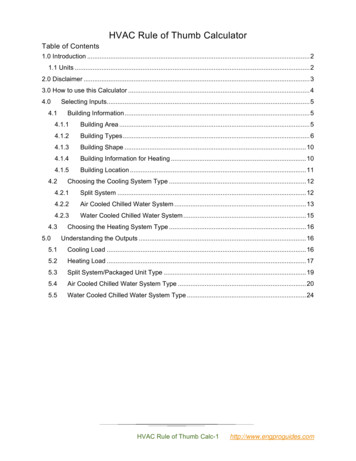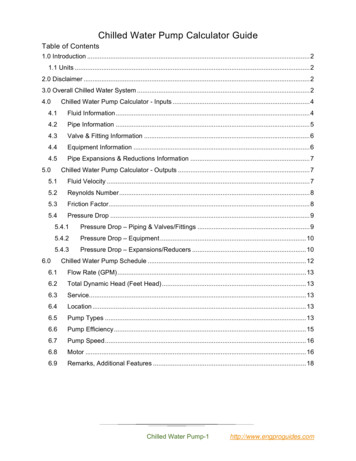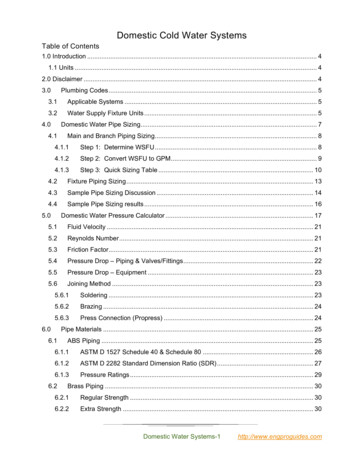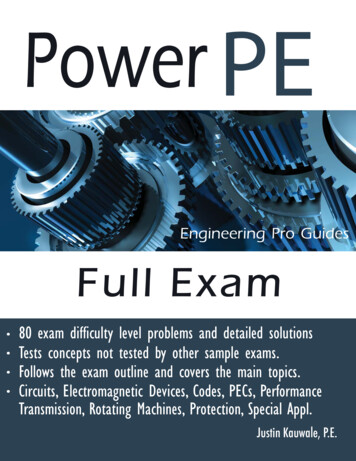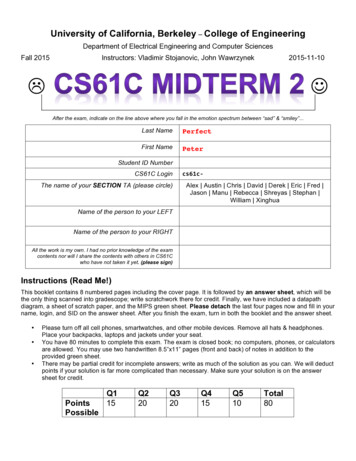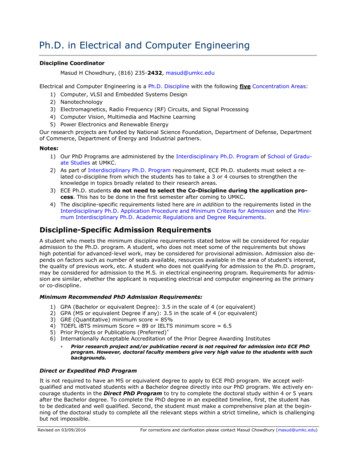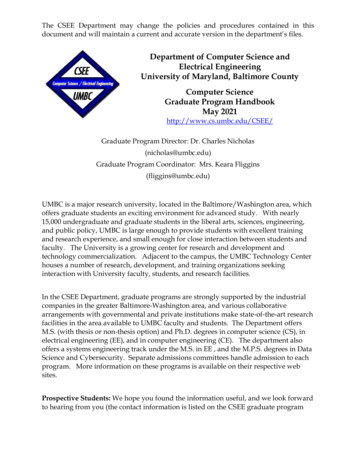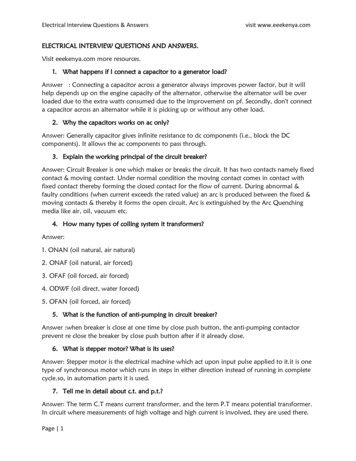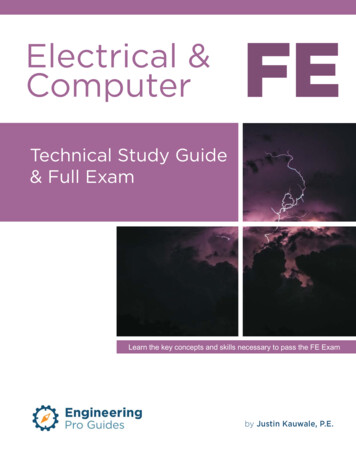
Transcription
Electrical &ComputerFETechnical Study Guide& Full ExamLearn the key concepts and skills necessary to pass the FE Examby Justin Kauwale, P.E.
Electrical & Computer FETechnical Study Guide & Full ExamHow to Pass the FE Electrical & Computer ExamTable of ContentsSection 0.0 . IntroductionSection 1.0 . MathematicsSection 2.0 . Probability & StatisticsSection 3.0 . Ethics & Professional PracticeSection 4.0 .Engineering EconomicsSection 5.0 . Properties of Electrical MaterialsSection 6.0 .Engineering SciencesSection 7.0 . Circuit AnalysisSection 8.0 . Linear SystemsSection 9.0 . Signal ProcessingSection 10.0 . ElectronicsSection 11.0 . PowerSection 13.0 . Control SystemsSection 14.0 . CommunicationsSection 15.0 .Computer NetworksSection 16.0 . Digital SystemsSection 17.0 . Computer SystemsSection 18.0 . Software DevelopmentSection 19.0 . Full ExamTable of Contentswww.engproguides.comCopyright 2020 Engineering Pro Guides, LLC. Licensed for individual use only.Section 12.0 . Electromagnetics
0 - IntroductionHow to Study for and Pass the FE ExamStudy GuideCopyright 2020 Engineering Pro Guides, LLC. Licensed for individual use only.www.engproguides.com
Section 0.0 - IntroductionTable of Contents1.0 Introduction . 21.1 Exam Format . 21.2 Key Concepts and Skills . 31.2 Units . 52.0 Disclaimer . 53.0 How to use this Book . 54.0 Practice exam tips . 65.0 NCEES FE Reference Handbook . 95.1 Unit Conversion . 95.2 Tables and Graphs . 9Past Exams . 106.1Pass Rates on Survey vs. NCEES . 106.2Estimated Cut Score . 10Introduction - 1www.engproguides.comCopyright 2020 Engineering Pro Guides, LLC. Licensed for individual use only.6.0
1.0 INTRODUCTIONOne of the most important steps in an engineer's career is obtaining the professional engineering(P.E.) license. It allows an individual to legally practice engineering in the state of licensure. Thiscredential can also help to obtain higher compensation and develop a credible reputation. Thefirst step towards obtaining your P.E. is passing the Fundamentals of Engineering (F.E.) Exam.Both tests are administered by the National Council of Examiners for Engineering and Surveying(NCEES). The FE Exam is a year round computer based test that can be taken as early as yoursenior year in college or with at least 3 years of engineering-related work experience. Oncepassed, the FE Exam will certify you as an Engineering in Training (EIT). With enough experienceafter passing the EIT, you will become eligible for the PE Exam. Engineering Pro Guides focuseson helping engineers pass the NCEES exam through the use of free content on the website,http://www.engproguides.com and through the creation of books like sample exams and guidesthat outline how to pass the PE exam.1.1 EXAM FORMATHow is the exam formatted?The FE exam format and additional exam day information can be found on the NCEES ExamineeGuide (https://ncees.org/exams/examinee-guide/). The entire exam period is about 6 hours, with2 minutes for signing agreements, 8 minutes for tutorials, and one break up to 25 minutes. Youwill have a total of 5 hours 20 minutes of actual exam time to solve 110 problems, which equatesto about 2.9 minutes per problem if spread out evenly. The test is broken up into two sessions.The length of each session is determined by the number of problems, 55 problems per session,and not the time. So, you could spend more or less than half the time on the first session, andthe remaining 5 hours 20 minutes will be allotted for the second session. Since the first sessiondoesn’t have a halfway time limit, it is very important to keep watch of the clock to make sure youhave enough time for the second session. Before each session is completed, you are allowed togo back to problems that you may have skipped or want to check in that session. However, oncethe first session is completed and submitted, you are no longer allowed to revisit the questions inthat session. There is a 25 minute break in between the sessions. You are allowed to take lessthan a 25 minute break or no break at all, but this does not increase the time you have to answerIntroduction - 2www.engproguides.comCopyright 2020 Engineering Pro Guides, LLC. Licensed for individual use only.In the FE exam you will not be able to bring in any outside reference material. You will be giventhe NCEES FE Exam Reference Handbook, which contains all the necessary equations, tables,and graphs that you will need to solve each problem. The NCEES FE Exam Reference Handbookwill be provided as a searchable electronic pdf during the test. The key to passing the FE examis understanding the key concepts and skills that are tested on the exam and becoming familiarwith using this handbook to solve each problems in approximately 2-3 minutes. Although theNCEES handbook provides the necessary equations for the exam, knowing how to apply themand which equations to use requires an understanding of the concepts and practice of the skills.The FE Exam is available for 6 disciplines plus a generic engineering discipline. This technicalguide teaches you the key concepts and skills required to pass the Electrical F.E. Exam in a singledocument.
exam questions. No points are deducted for incorrect answers, so be sure to provide an answerfor all questions, even if it is a guess. The final results are scaled based on the exam difficulty.There are five types of question formats that could be presented on the exam.1.2.3.4.5.Multiple Choice (4 choices) – Select one option, majority of questions in the examMultiple Answers – Select multiple answers that are correctSelect by Clicking – Click on a point on a graph, etcDrag and Drop – Matching, sorting, labeling, etcFill in the Blank – Type in the answerThe types of questions and number of questions per topic will be based on the outline providedby NCEES, discussed in the next section. These topics will not be labeled on the test. Finally,the NCEES Examinee Guide states that there will be some questions that will not be scored inthe exam. These are questions that are tested for their quality and possible use in future exams.Your final results will be given to you 7-10 days after you take the exam.1.2 KEY CONCEPTS AND SKILLSHow are the key concepts and skills determined?123456789101112131415161718Mathematics - (11-17 questions)Probability and Statistics - (4-6 questions)Ethics and Professional Practice - (3-5 questions)Engineering Economics - (3-5 questions)Properties of Electrical Materials - (4-6 questions)Engineering Sciences - (6-9 questions)Circuit Analysis - (10-15 questions)Linear Systems – (5-8 questions)Signal Processing - (5-8 questions)Electronics - (7-11 questions)Power - (8-12 questions)Electromagnetics - (5-8 questions)Control Systems - (6-9 questions)Communications - (5-8 questions)Computer Networks - (3-5 questions)Digital Systems - (7-11 questions)Computer Systems - (4-6 questions)Software Development - (4-6 questions)Each of these broad topics were investigated and filtered for concepts and skills that met thefollowing criteria:Introduction - 3www.engproguides.comCopyright 2020 Engineering Pro Guides, LLC. Licensed for individual use only.The key concepts and skills tested in the sample exams and taught in this technical study guidewere first developed through an analysis of the topics and information presented by NCEES. Theabove factors related to timing is considered. The Electrical FE exam will focus on the followingtopics as indicated by NCEES. (https://ncees.org/engineering/fe/):
(1) First, the concept and skill must be fundamental principles taught in college. The testis intended for the engineer right out of college without work or practical experience. The examwill focus on fundamental engineering principles you will need during your career. However, sincethe Electrical Engineering discipline is broad, the exam will be based on the general knowledgethat each Electrical Engineer develops in school and will not include an in-depth, higher levelanalysis of a specific topic. The subjects listed above are the basic curriculum that ElectricalEngineers should encounter before they graduate.(2) Second, the skill and concept must be testable in roughly 2.9 minutes per problem.There are (110) questions on the Electrical FE exam and you will be provided with 5 hours 20minutes to complete the exam. This results in an average of 2.9 minutes per problem. Thiscriterion limits the complexity of the exam problems and the resulting solutions. For example,voltage drop calculations are common in Circuits, but the calculations can get lengthy dependingon the complexity of the circuit. Thus, simple circuits will be used during the exam.(4) The F.E. Exam tests the background engineering concepts and skills for a practicingElectrical Engineer and not the derivation of the topic or concept. The exam is intended toprove that the test taker is minimally competent to practice as an engineer in training and has thebasic understanding of Electrical Engineering principles. This background knowledge isnecessary for the practicing engineer to understand how engineering concepts and skills areapplied in the field. Therefore, the exam is less concerned with theory and more with how theseconcepts and skills can be applied. For example, the F.E. exam is less interested with thederivation of angular momentum equations and more with how to solve for resultant forces or finalvelocity conditions.In summary, this book is intended to teach the necessary skills and concepts to develop aminimally competent, practicing Electrical Engineer in Training, capable of passing the F.E. exam.This book and the sample exam do this through the following means:(1) Teaching common skills, principles, and concepts in the Electrical field.(2) Providing sample problems that can be completed in roughly 2-3 minutes per problem.(3) Teaching how to use and apply the equations in the NCEES FE Reference Handbook.Introduction - 4www.engproguides.comCopyright 2020 Engineering Pro Guides, LLC. Licensed for individual use only.(3) Third, the information and equations required to solve the problems should be in theNCEES FE Reference Handbook. Since you are not allowed to bring in outside resource, theHandbook and along with any information given to you in the problem should provide you withsufficient information needed to solve the problems. It is extremely unlikely that you will need anequation that is not given to you in the reference handbook. Thus, the handbook is an additionalresource for understanding the types of questions that could be asked. Note that the NCEES FEReference Handbook contains extraneous information for the Electrical FE exam, since the sameresource is used across all tested disciplines. To narrow down the
The NCEES FE Exam Reference Handbook will be provided as a searchable electronic pdf during the test. The key to passing the FE exam is understanding the key concepts and skills that are tested on the exam and becoming familiar with using this handbook to solve each problems in approximately 2

